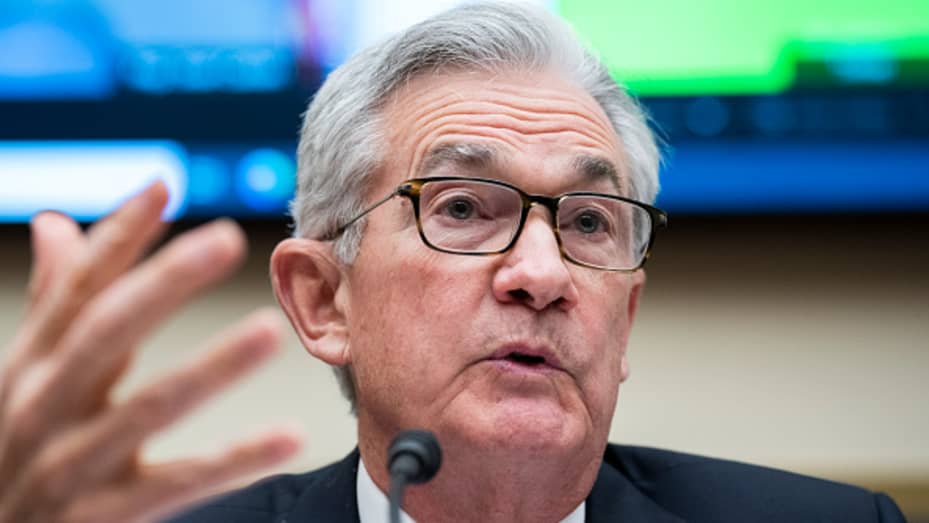
Persistently high inflation combined with a labor market near full employment will push the Federal Reserve to raise interest rates more than expected this year, according to the latest forecast from Goldman Sachs.
The Wall Street firm’s chief economist, Jan Hatzius, said in a note Sunday that he now figures the Fed to enact four quarter-percentage point rate hikes in 2022, representing an even more aggressive path than the central bank’s indications of just a month ago. The Fed’s benchmark overnight borrowing rate is currently anchored in a range between 0%-0.25%, most recently around 0.08%.
“Declining labor market slack has made Fed officials more sensitive to upside inflation risks and less sensitive to downside growth risks,” Hatzius wrote. “We continue to see hikes in March, June, and September, and have now added a hike in December for a total of four in 2022.”
Goldman had previously forecast three hikes, in line with the level Fed officials had penciled in following their December meeting.
The firm’s outlook for a more hawkish Fed comes just a few days ahead of key inflation readings this week that are expected to show prices rising at their fastest pace in nearly 40 years. If the Dow Jones estimate of 7.1% year-over-year consumer price index growth in December is correct, that would be the sharpest gain since June 1982. That figure is due out Wednesday.
At the same time, Hatzius and other economists do not expect the Fed to be deterred by declining job growth.
Nonfarm payrolls rose by 199,000 in December, well below the 422,000 estimate and the second month in a row of a report that was well below consensus. However, the unemployment rate fell to 3.9% at a time when employment openings far exceed those looking for work, reflecting a rapidly tightening jobs market.
Hatzius thinks those converging factors will cause the Fed not only to raise rates a full percentage point, or 100 basis points, this year but also to start shrinking the size of its $8.8 trillion balance sheet. He pointed specifically to a statement last week from San Francisco Fed President Mary Daly, who said she could see the Fed starting to shed some assets after the first or second hike.
“We are therefore pulling forward our runoff forecast from December to July, with risks tilted to the even earlier side,” Hatzius wrote. “With inflation probably still far above target at that point, we no longer think that the start to runoff will substitute for a quarterly rate hike.”
Up until a few months ago, the Fed had been buying $120 billion a month in Treasurys and mortgage-backed securities. As of January, those purchases are being sliced in half and are likely to be phased out completely in March.
The asset purchases helped hold interest rates low and kept financial markets running smoothly, underpinning a nearly 27% gain in the S&P 500 for 2021.
The Fed most likely will allow a passive runoff of the balance sheet, by allowing some of the proceeds from its maturing bonds to roll off each month while reinvesting the rest. The process has been nicknamed “quantitative tightening,” or the opposite of the quantitative easing used to describe the massive balance sheet expansion of the past two years.
Goldman’s forecast is in line with market pricing, which sees a nearly 80% chance of the first pandemic-era rate hike coming in March and close to a 50-50 probability of a fourth increase by December, according to the CME’s FedWatch Tool. Traders in the fed funds futures market even see a nonnegligible 22.7% probability of a fifth rise this year.
Still, markets only see the funds rate increasing to 2.04% by the end of 2026, below the 2.5% top reached in the last tightening cycle that ended in 2018.
Markets have reacted to the prospects of a tighter Fed, with government bond yields surging higher. The benchmark 10-year Treasury note most recently yielded around 1.77%, nearly 30 basis points higher than a month ago.
[“source=cnbc”]

